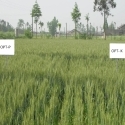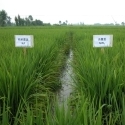19 Jun 2015
An Introduction to Sichuan Province (The Land of Abundance)
Sichuan province, heavily populated, and situated in southwest China, is a large inland province known for its agricultural production capabilities. Its population was 81.4 million at the end of 2014. Known as the Land of Abundance, Sichuan is abundant in natural resources and endowed with favorable natural conditions. The province grows various kinds of crops and produces ample agricultural products. Chongqing used to be a part of Sichuan province and became autonomous in 1997. Since then Sichuan lost its leading position in population and its land area also fell from 567,400 sq. km to 485,000 sq. km of today.
A Vast Territory with Complicated Landscapes
The Sichuan basin lies in the eastern portion of the province and mountainous regions surround it to the north and southwest. The plateau, with series of mountains and gorges, occupies its western reaches. There are varieties of landforms, including plains (7.8%), hills (10.1%), plateaus or mountains (32.1%), mountainous regions (49.4%), water (0.6%). The agricultural land is mainly distributed in the hilly basin region and on the Chengdu Plain.
Limited Farming Land
There are 6,720,000 ha of cultivated land at end of 2009, of which 2,249,600 ha are paddy fields and the remainder is uplands. On average, there is only 0.075 ha of farmland per capita, less than the average farmland of 0.10 ha per capita for China.
Favorable Climate for Agricultural Production
The Sichuan Basin, located in the eastern region, has a humid sub-tropical climate with relatively higher temperatures than the other parts of China at the same latitude. The annual temperature is above 16 0C and the frost free days are usually around 220 to 330 days a year; the total annual precipitation is between 1,000 to 1,200 mm and sunny days are 1000 to 1600 hrs a year, which is the lowest in China. The mountainous region, lying in the southwest of Sichuan, has no clear-cut for the four seasons with cool summer and warm winter, but has distinct dry and wet seasons with annual temperatures around 14 to 20 0C and 240 to 330 frost free days. The total annual precipitation is between 900 to 1,200 mm and sunny days are 2,200 to 2,700 hrs a year, especially in the area of Panzihua city, which is called as the Golden Triangle or the Treasure Bowl in the upper reaches of Yangtze River, where annual temperature is around 14 to 20 0C and crops can grow 3 seasons a year, similar to the tropics of Southern Asia. The river valleys have the longest summer and no winter, with abundant agricultural production in grains, sugarcane and other sub-tropical fruits (mango, guava, and grape). The plateau with high mountains and deep gorges, located in western Sichuan, though there receives ample solar radiation, usually has chilly winters and cool summers due to insufficient heat and precipitation at such high elevations (2,000 to 5,000 m). As a whole, the average annual temperature is 4 to 12 0C, frost free days are 100 to 200 days a year, the annual precipitation is 500 to 900 mm and sunny days are 1,600 to 2,600 hrs a year (twice of that in Sichuan Basin).
Crops
The sowing area (multi-crops a year are counted) is around 9.67-10.00 million ha, of which 6,670,000 ha are used for grain crops, 1.46-1.67 million ha for economic crops and the remainder (1.53-1.67 million ha) for other crops. Rice, wheat, corn and sweet potato are the four main staple food crops. There are also various other economic crops, such as cotton, rape, sugarcane, fruits (citrus, peach, apple, pear, loquat, plum, apricot, Chinese gooseberry, watermelon, strawberry etc.), vegetable, tea, tobacco, hemp, Chinese herbs and so on.
Importance of Agricultural Products and Sideline Products in China
Being the reliable production basin for grain and non-staple food, Sichuan province plays a leading role in producing grains, edible oils, hemp, sugarcane, mulberry, tea, fruits, Chinese herbs, tobacco, etc., in China.
Soil-types and Fertilizer Consumption
There are nineteen types of soils in the province of which mainly include yellow earth, purple soil, paddy soil, red soil, limestone soils, and alluvial soil. These soils generally have medium to medium high soil fertility and certain nutrient disorders often occur. In general, deficiencies of nitrogen (N), phosphorus (P) and potassium (K) are common problems of nutrient disorder in the cultivated soils. According to soil testing results obtained in recent years, soil organic matter, available N and P have been increasing, while soil K deficiency is even worsen compared to the 30 years ago. Soil acidification in recent years has become a problem of wide concern. Deficiencies of K, Ca, Mo, and B are common in acid soils, while deficiencies of Fe, Zn, and B are common in calcareous soils.
In 2011 the total fertilization consumption in Sichuan was 2.51 million t (of nutrient) with an application rate of 263 kg/ha of sowing area. Of the fertilizers consumed, there were 1,288,000 t of N, 506,000 t of P2O5, 173,000 t of K2O, and 532,000 t of compound fertilizers. This gives a N: P2O5: K2O:compound fertilizer ratio of 1:0.39: 0.13:0.41, indicating there is still a great potential for increase in K consumption in future.




